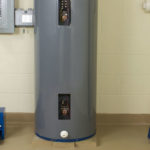As a rule, boilers are installed in order to heat water to the required temperature, in rooms where it is not available, for domestic needs of everyday life, or for technical applications. These devices are mainly produced of an electrical type. Such devices for heating water are mounted in different rooms:
- baths;
- kitchens;
- toilets;
- and other rooms where hot water is needed.
They are small in size, but there are also large units on sale, it all depends on how much water the boiler holds. In this article, we will tell you how to mount and how to connect the boiler to electricity. So we will describe what an RCD is, and what it is used for on a water heater.
Application of water heaters
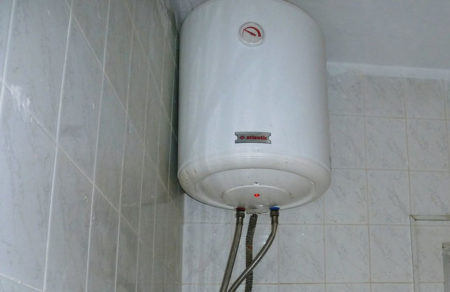 In addition to the normal function, some people install electric heaters in order for them to perform the heating function. However, such cases are rare, the house should not have a complex heating system, and the power of the unit itself should at least be at around 1 kW. Also, it is necessary to connect third-party equipment to the system - a circulation pump, so that it accelerates the water in a closed circle of the heating system.
In addition to the normal function, some people install electric heaters in order for them to perform the heating function. However, such cases are rare, the house should not have a complex heating system, and the power of the unit itself should at least be at around 1 kW. Also, it is necessary to connect third-party equipment to the system - a circulation pump, so that it accelerates the water in a closed circle of the heating system.
![]() See also - How to use a boiler to save energy?
See also - How to use a boiler to save energy?
Basic installation work
- Fixing the water heater to the wall – the first step is to make markings on the wall in order to know where to drill and install the fasteners for the boiler. It is recommended to use a level during marking, because all fasteners must be at the same level, since the distortion of the unit can affect both its performance and the holder itself, in both cases the elements can quickly become unusable.
You should not get too hung up on wall decorations, since with careful installation everything can be done smoothly, in extreme cases, the boiler will hide behind all your inaccuracies during installation.
- Electric installation work - after the boiler is securely fastened to the wall, it must be connected to the mains and ensure its protection against short circuits and voltage surges. There are two connection options:
- connection to the outlet - boilers connected to the outlet should not be more powerful than 3.5 kW. In these cases, it will be necessary to lead the outlet to the device, or lay the cable to the nearest outlet. For this case, the cable cross-section must be at least 3 mm. sq.;
- direct connection to the electrical panel - used for powerful devices over 3.5 kW. Since the outlet, in such cases, cannot be used, it simply will not withstand such a boiler power. Therefore, a cable of a larger cross-section is taken, and it is led directly to the electrical panel in order to provide sufficient power without fear of overload. It is important to know that boilers with a capacity of 3.5 to 4 kW must be connected to a single-phase network. However, if the above value is exceeded, then the device is connected to a three-phase network, under a voltage of 380V.
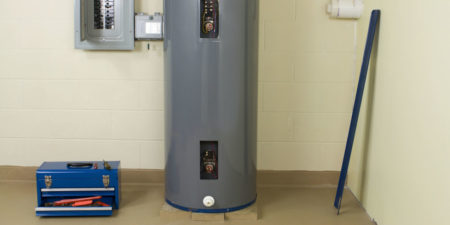
The choice of connection, as mentioned above, depends on the power of the device. After you have already decided how to connect the boiler to electricity, protective measures should be taken to ensure the reliable performance of the device.
- Installation of the protection system - since the water heater directly works with water, it should be connected to the network through protection in order to protect yourself and nearby devices. First of all, you must install an RCD on the boiler, as well as connect the circuit breakers to this power line leading to the device.
If the device is powered from an outlet, the protective equipment must be installed on the distribution board. The connected units through the 220V network must pass through two-pole circuit breakers. When connected directly, all of the above items should be located as close to the unit as possible to facilitate maintenance of all equipment. However, at the same time, it is also necessary to protect the RCDs themselves with a circuit breaker, since they will operate in a humid environment, and for general safety, by isolating them from the environment with special sealed boxes.
- After you have finished with everything, it is worth checking the integrity of the wires and the serviceability of the protective equipment again. Only after a thorough check can the boiler start up for the first time. The first step is to open the valves on the pipe circuits (both cold water and hot), and then we start turning on the device. After that, water will begin to flow into it, and when the required volume of liquid is collected there, the boiler will begin to heat it, after which you can use hot water through the taps.
Malfunctions of the RCD of the water heater
In some cases, manufacturers set RCD for a water heater when assembling. This device is a small block that goes through the cable cut. Let's start with decoding the RCD - a residual current device, it is designed to disconnect the device from the external electrical network, when the value of the differential current goes over a certain value, the device is completely autonomous. This device is not like overcurrent protection equipment. The RCD is triggered when the current "leaks" to the housing component and the wiring of the unit, and a shutdown occurs.
The principle of operation of the RCD
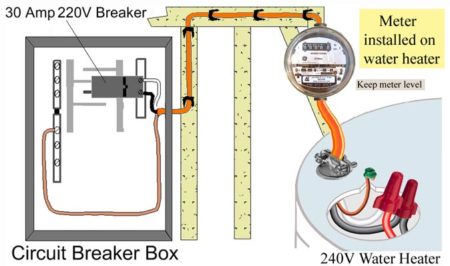
Everything is quite simple in understanding - when the water heater is turned ondevices passes current through itself and compares its power with the outgoing one, and if a leakage difference of 30-35 milliamperes is detected (the value depends on the type of device, but the standard is 30 mA), the machine opens the circuit. RCD is designed to protect a person from possible electric shocks.
The reasons why the RCD may work:
- human touch to parts of the body or elements that can conduct electric current;
- during human contact with the "ground";
- the insulation of the wiring is damaged and when these parts come in contact with the case;
- when replacing a zero cable and a grounding conductor;
- when the neutral conductor breaks off and a person touches the body and "ground" simultaneously.
When you use a boiler together with an RCD, you may have noticed that this device works too often, this can be explained by two things:
- the device is defective. Such things are quite part and quickly become unusable, but it all depends on the quality of production, for example, the manufacturer of boilers Termeks uses low-quality RCDs;
- another reason for knocking out an RCD can be the replacement of grounding with a neutral conductor. This is due to the use of "zeroing" - this is the combination of the neutral and grounding cables. The device does not perceive this grounding and often turns off the water heater.
It is recommended to carry out maintenance work at least once every two months in order to make sure that the device is working properly.
It is almost impossible to repair an RCD, since it has a complex structure. Often, you only have to replace it with a new one, the part must be changed to the original one, since the system may have conflicts with the other.
Basic rules when connecting the boiler to the mains
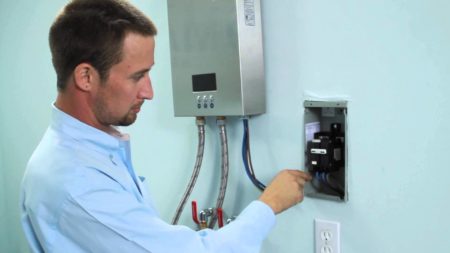
In order not to put yourself in danger and to install the protective equipment yourself, you should adhere to the following safety rules:
- before starting work, turn off the power to the electrical panel in order to calmly carry out all the installation measures;
- all wires must be connected to each other using soldering work;
- it is necessary to take care of the protection of the RCD, circuit breakers and grounding;
- due to the fact that the equipment operates in a humid environment, care must be taken to protect the wiring and sockets in order to protect them from contact with moisture;
- fasteners must be installed correctly, the minimum diameter of one anchor hook is at least 8 millimeters, since the volume of one such boiler can be more than 100 liters. It is strictly forbidden to install these water heating units on plasterboard walls. If you still need it, it would be best to install a floor-standing device.
Conclusion
We told you how to connect the boiler to electricity and protect it from various voltage surges and short circuits. In case you are not confident in your abilities, it is recommended to call a wizard who will help you carry out all the installation work.
See also:
- Top 6 Hotpoint-Ariston Water Heaters
- The 8 best Zanussi water heaters of 2019
- The 8 best Thermex water heaters of 2019
- 10 best Timberk water heaters of 2019
- 10 best Gorenje water heaters of 2019

